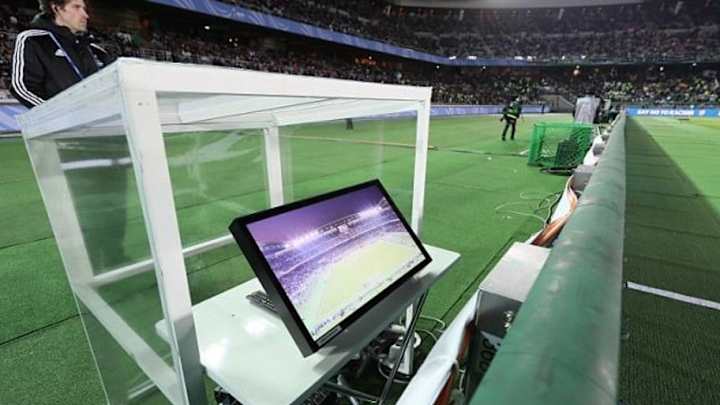Why VAR at the 2018 World Cup is Actually a Good Thing

Football is lumbering its way towards technological advancements. First, we had the introduction of Hawk-Eye in 2013, now it has been announced by FIFA that VAR will be making its World Cup debut in Russia this summer.
Technology has been the catalyst to propelling a number of sports into the modern-day era. Rugby, cricket and tennis have all benefited from its intervention. Football, on the other hand, has paid the price for a rigid approach.
In the 2010 World Cup, England were deservedly thrashed by Germany 4-1 in Bloemfontein. The game was overshadowed, however, by Lampard's goal that never stood. In the immediate aftermath, fingers were being pointed in all directions, and then-FIFA president Sepp Blatter, who had previously refused to sanction the use of goal-line technology, performed a U-turn and promised to consider its introduction.
Former Secretary General of FIFA Jérôme Valcke pitched the idea of having two extra assistant referees by the side of each goal to: “Have more eyes helping [the referee] to make decisions.”
Then-UEFA President Michel Platini remained staunchly against the introduction of goal-line technology, arguing that it would lead to 'Playstation football.'
"That [Lampard goal] was the moment for me to say, 'You can't afford for something similar to happen in the next World Cup'. We could say it is a historic day for international football," Blatter would later go on to say in 2012.
Despite all that was said, it wasn't to be a historic day for international football - and a similar mistake was to be made in the 2012 European Championships.
England progressed to the last eight of the tournament, thanks to a narrow 1-0 win against the hosts Ukraine. There was a problem though, as Marko Devic's shot had clearly crossed the line before it was scrambled away by Terry. The officials - including the one by the goal - remained unmoved and the goal was never awarded.
The decision as to whether to introduce goal-line technology to international football was yet to be taken by the international governing bodies.
Finally, action was taken and the footballing community was to embrace GLT. The Premier League approved the use of Hawk-Eye in 2013, and FIFA used their own version for the 2014 World Cup. Following its success in the Premier League, the Championship was introduced to Hawk-Eye in 2017.
However, there was another major incident in the 2010 World Cup which was yet to be rectified.
Argentina beat Mexico 3-1 to progress to the quarter-finals of the tournament, but their opening goal was blatantly offside.
Then, the replay was inadvertently played on the big screen inside the stadium, and the pictures which proved the goal was invalid were relayed back to the referee from his officials and the Mexican players. The referee and linesman both knew that they had got it terribly wrong but, having already awarded the goal, they were left powerless to do anything about it.
It was another major embarrassment for FIFA, and another incident which they would be slow to react to. Nevertheless, eight years later and it seems the farce won't be repeated at this summer's World Cup.
FIFA have announced that video replays will be used for the first time at this summer's World Cup in Russia. What does this mean for the tournament? Well, GLT combined with VAR could possible slow down the game - what it will definitely do, however, is inhibit previous injustices from reoccurring - only legitimate goals will count from now on.
Football is finally catching up to other sports, and it's thanks to the technological advancements such as Hawk-Eye and VAR. Yes, it might take some time getting used to but, in the long run, it will certainly be worth it.
